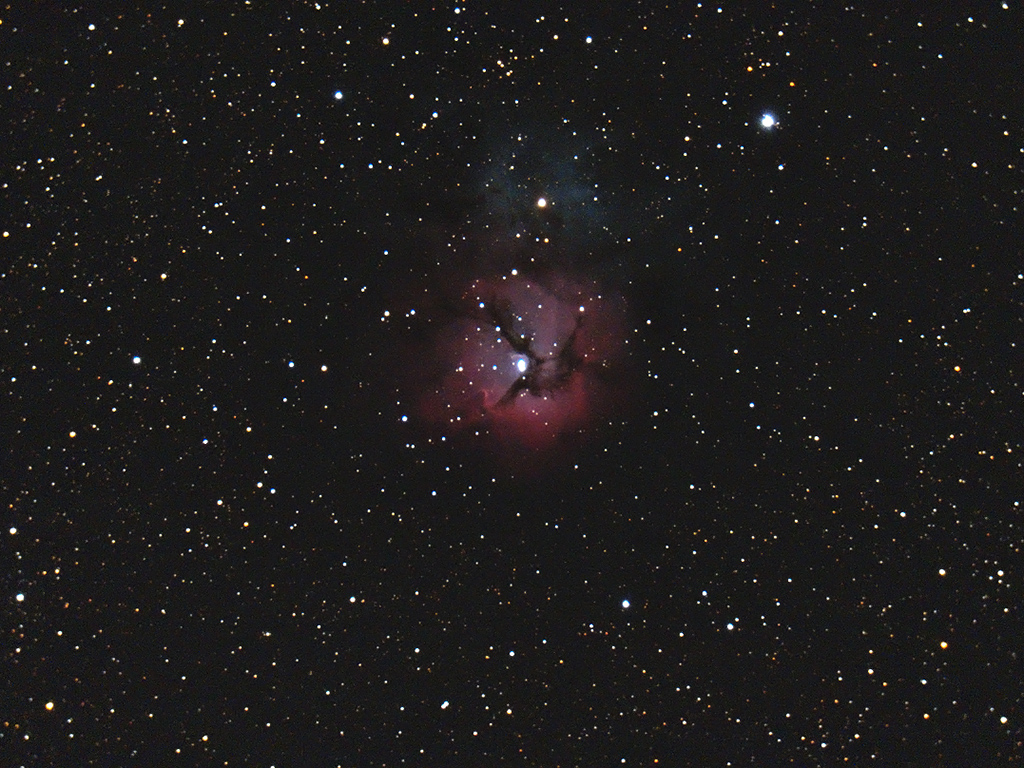
Telescope: LXD75 SC8 @ f/6.3, LX65 mount, altaz mode
Camera: Baader modified Canon 600Da, interval timer
Filter: GSO IR Blocking Filter
Guide scope: None
Exposure: 36x10sec, ISO 1600, saved as RAW
Darks: Internal (Long Exposure Noise Reduction On)
Flats: 32×1/25sec, Tee shirt flats taken at dusk
Average Light Pollution: Red zone, Bortle 8, poor transparency, moonlight
Lensed Sky Quality Meter: 18.3
Stacking: Mean with a 1-sigma clip.
White Balance: Nebulosity Automatic
Software: Deep Sky Stacker, Nebulosity, Photoshop
M20, the Trifid Nebula in Sagittarius is one of a series of nebula that grace the summer Milky Way. The red is a tenuous cloud of interstellar hydrogen set aglow by stars embedded in it, the blue is dust in the background reflecting starlight, and the dark lanes are vast streamers of dust in the foreground. Being near the Milky Way this field is crowded with faint stars, though the density of stars is uneven. The dark regions show areas of dust blocking the light from the faint distant stars in the background while the brighter regions are relatively clear avenues into the deep galaxy beyond.
This is one of a series of images that I have been taking to explore using relatively simple equipment and techniques. M20 is one of several examples of nebula that are utterly invisible from my backyard, even in my 16.5”, but are within easy reach of modest imaging equipment. For me, imaging is primarily an extension of visual observing and while the product is a photograph, the thrill is observing targets that are otherwise invisible.
M20 is currently low in the southwest at sunset.
Recent Comments